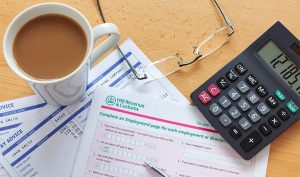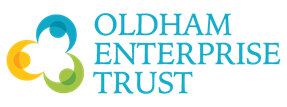Self-employed and need to file your first Self Assessment tax return?
Self-employed and need to file your first Self Assessment tax return?
21 things you need to know!
Article by GoSimpleTax
S o, you’ve gone self-employed in the past year or so and need to report taxable income via Self Assessment? Great. Only problem is – you haven’t completed a Self Assessment tax return before. Gulp.
o, you’ve gone self-employed in the past year or so and need to report taxable income via Self Assessment? Great. Only problem is – you haven’t completed a Self Assessment tax return before. Gulp.
In truth, with a bit of knowledge, completing your Self Assessment tax return is nothing to worry about. Each year, more than 12.2m Self Assessment tax returns are filed by people from a wide range of backgrounds – people just like you.
You don’t need to be an accountant or use one to complete your Self Assessment tax return, you can do it yourself. But before you try to complete your first Self Assessment tax return – to make the task quicker, cheaper and easier for you – here are 21 things you should know.
Register for Self Assessment
1 To pay Income Tax and National Insurance contributions (NICs), self-employed people (AKA sole traders) must register for Self Assessment. Self Assessment is the system that the government and the UK tax authority HMRC use to collect Income Tax.
2 You can register for Self Assessment via government website GOV.uk You must register for Self Assessment by 5 October in your second trading tax year (the tax year runs from 6 April to 5 April), you could be fined if you don’t. Do it sooner rather than later.
3 You’ll need a Government Gateway user ID and password to sign into your business tax account to complete your Self Assessment tax return. If you don’t have one, getting a user ID via GOV.uk is simple enough.
Need to know! After registering online, within 10 days (21 if you live overseas), you’ll get a letter through the post with your Unique Taxpayer Reference (UTR) number. You need your UTR to file your Self Assessment return.
Filing your Self Assessment tax return
4 You can complete and file your Self assessment tax return as soon as the tax year ends on 5 April. It’s best to get it done and dusted long before the online filing deadline, which is midnight on the 31 January.
Need to know! Should you choose to download and fill out a paper tax return – something that only about 4% of people still do – the filing deadline is 31 October. Filing online is much quicker, easier and more convenient, with mistakes much less likely, too, if you use reliable third-party software.
5 You’ll probably have to pay a penalty and interest if you do not file your Self Assessment tax return and pay any tax you owe when required.
6 Once registered, if you choose to file online (as more than 95% of people do) you can file directly with HMRC via Government Gateway or you can use third-party commercial software (which can save you time and money).
7 Using Self Assessment software can ensure that you enter all of the necessary information in the right places. Automatic prompts prevent mistakes and can minimise your tax bill by helping you to claim all of the tax allowances and reliefs to which you’re entitled.
Need to know! If you decide to file online but miss the midnight 31 January deadline and don’t have a reasonable excuse, you’ll be charged a £100 penalty. Your fine will increase if you still haven’t filed after three months.
The Self Assessment tax return
8 Self-employed individuals need to complete the main Self Assessment tax return (SA100) as well as a supplementary page (SA103S or SA103F), summarising their taxable self-employed income and costs.
9 You use the SA103S if your annual business turnover was below the VAT threshold in the tax year (£85k for the 2022/23) and you use SA103F if your turnover was higher.
10 You may need to complete and file other supplementary pages if you have other taxable income to report, for example, SA105 if you also earn taxable income from renting out UK property.
11 Within the SA100, you provide details of taxable income and any capital gains, as well as student loan repayments (if applicable), taxable bank or building society interest, pension payments, annuities, donations to charity and tax reliefs and allowances that you wish to claim.
Self Assessment allowable expenses
12 Self-employed people can claim for many business costs. Such “allowable expenses” can include: business premises heating, lighting, water; rates; stock and raw materials; travel (ie fuel, parking, train/bus/taxi fares); staff/subcontractor wages; office costs (stationery, phone and broadband); insurance or bank charges; uniforms or safety clothing; marketing/advertising; training; professional fees.
- Visit government website GOV.uk for more information about claiming sole trader allowable expenses.
13 Sole traders who work from home all or some of the time can claim a proportion of their domestic costs for electricity, gas, water, Council Tax, mortgage interest or rent, broadband and telephone use, repairs and maintenance, etc.
14 If you use something for both business and personal reasons, you can only claim allowable expenses for the business cost proportion. You’ll need to use a reliable method to work out how much to claim.
15 Rather than working out your actual business expenses, HMRC allows you to claim flat-rate “simplified expenses” for running your business from home and business travel. Visit GOV.uk to find out more about simplified expenses.
Need to know! If you’re not sure whether a business cost is allowable, contact the Self Assessment helpline. You can’t claim allowable expenses if you claim the £1,000 tax-free trading allowance, which is advised if your expenses are below £1,000.
Use GoSimpleTax via this link >>> http://www.gosimpletax.com/offer and get a 25% discount off RRP!
Completing your Self Assessment tax return
16 According to Which?, on average, it takes about two and a half hours to complete a Self Assessment tax return. And while more experienced people (about 20%) can get it done in less than an hour, it takes as long as five hours for 10% of Self Assessment taxpayers. Some people do it in one session, others do it in two or three.
Top Tip! Before starting, read HMRC’s guidance and help sheets on the SA100 and supplementary pages so that you better understand what information you need to enter.
17 Before you start to fill in your Self Assessment tax return, to help you to complete the task much sooner, have all of the following to hand:
- your ten-digit Unique Taxpayer Reference (UTR)
- your National Insurance number
- details of your income from the tax year (eg income from self-employment, dividend payments, interest, rental income, etc)
- categorised summaries of costs you wish to claim as allowable expenses
- contributions to charity or pensions that might be eligible for tax relief.
Having all of your income and costs neatly summarised already in accounting software really will save you a lot of time when it comes to filling in your Self Assessment tax return.
Top Tip! If you also receive income from part-time or full-time employment, have your P60 to hand. Even though you’ve already paid tax on it, you need to include employed incomes in your SA100, so that your overall tax liability can be calculated.
18 Don’t rush when filling out your Self Assessment tax return, otherwise you’re more likely to make mistakes. Pick a time and a place where you’ll be free from distractions, so you can concentrate fully on the job in hand.
19 You can file your Self Assessment tax return any time after 6 April, so don’t leave it until the week before the online filing deadline (midnight on 31 January). You don’t need that additional stress, right?
20 If you file online but suddenly realise that you’ve made a mistake in your Self Assessment tax return, you’ll have to wait three days (72 hours) to correct it. But you can amend figures up to 12 months after the filing deadline.
How much tax will you pay?
21 Your tax bill will be based on the figures you’ve reported in your Self Assessment tax return and the Income Tax into which your taxable income falls.
- Thanks to the Personal Allowance, you don’t pay any Income Tax on the first £12,570 of your income (providing you don’t earn more than £125,140 in a tax year). This is in addition to other tax reliefs and allowances that you can claim.
- The 20% Basic Rate of Income tax is payable on income between £12,571 and £50,270. The 40% Higher Rate of Income Tax is payable on income between £50,271 and £150,000. The 45% Additional Rate of Income Tax is payable on earnings of more than £150,000 a year (*Income Tax bands are different in Scotland).
- Self-employed sole traders normally pay two types of National Insurance contributions (NICS): Class 2 (£3.15 a week) if your profits are £6,725 or more a year; and Class 4 if your profits are £11,909 or more a year (9.73% on profits between £11,909 and £50,270; 2.73% on profits over £50,270: *2022/23 tax year for all figures quoted).
Need to know! The deadlines for paying your tax bill are 31 January for any tax you owe for the previous tax year (it’s called a “balancing payment”) and your first “payment on account” (advance payments towards your tax bill, including Class 4 NICs if you’re self-employed), then 31 July for your second payment on account.
Income, Expenses and tax submission all in one.
GoSimpleTax will provide you with tips that could save you money on allowances and expenses you might have missed.
The software submits directly to HMRC and is the solution for the self-employed, sole traders and anyone with income outside of PAYE to file their self-assessment giving hints and tips on savings along the way.
GoSimpleTax does all the calculations for you saving you ££’s on accountancy fees.
